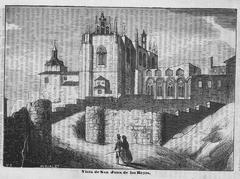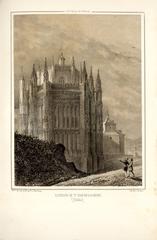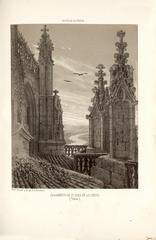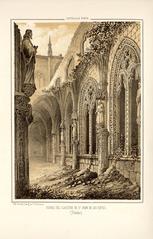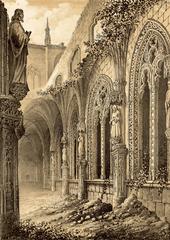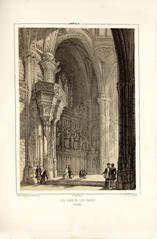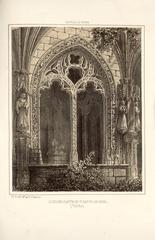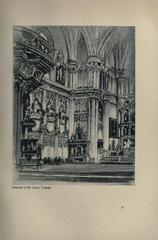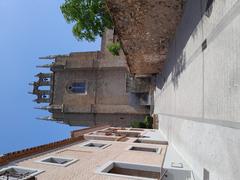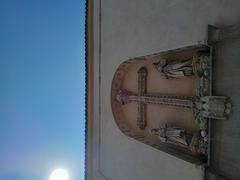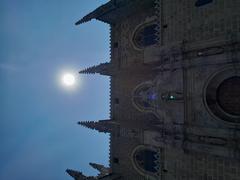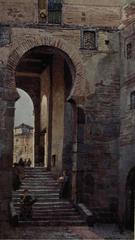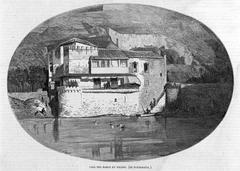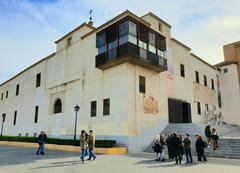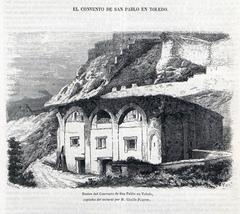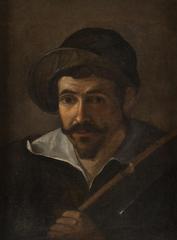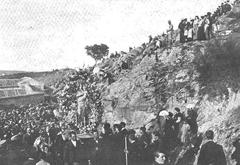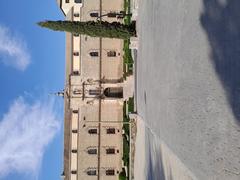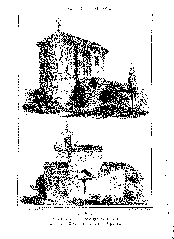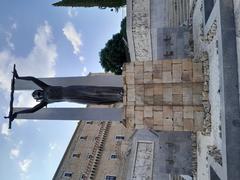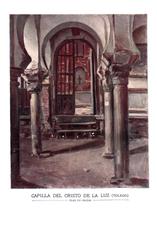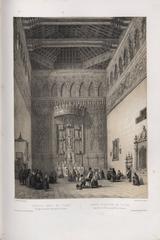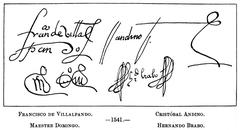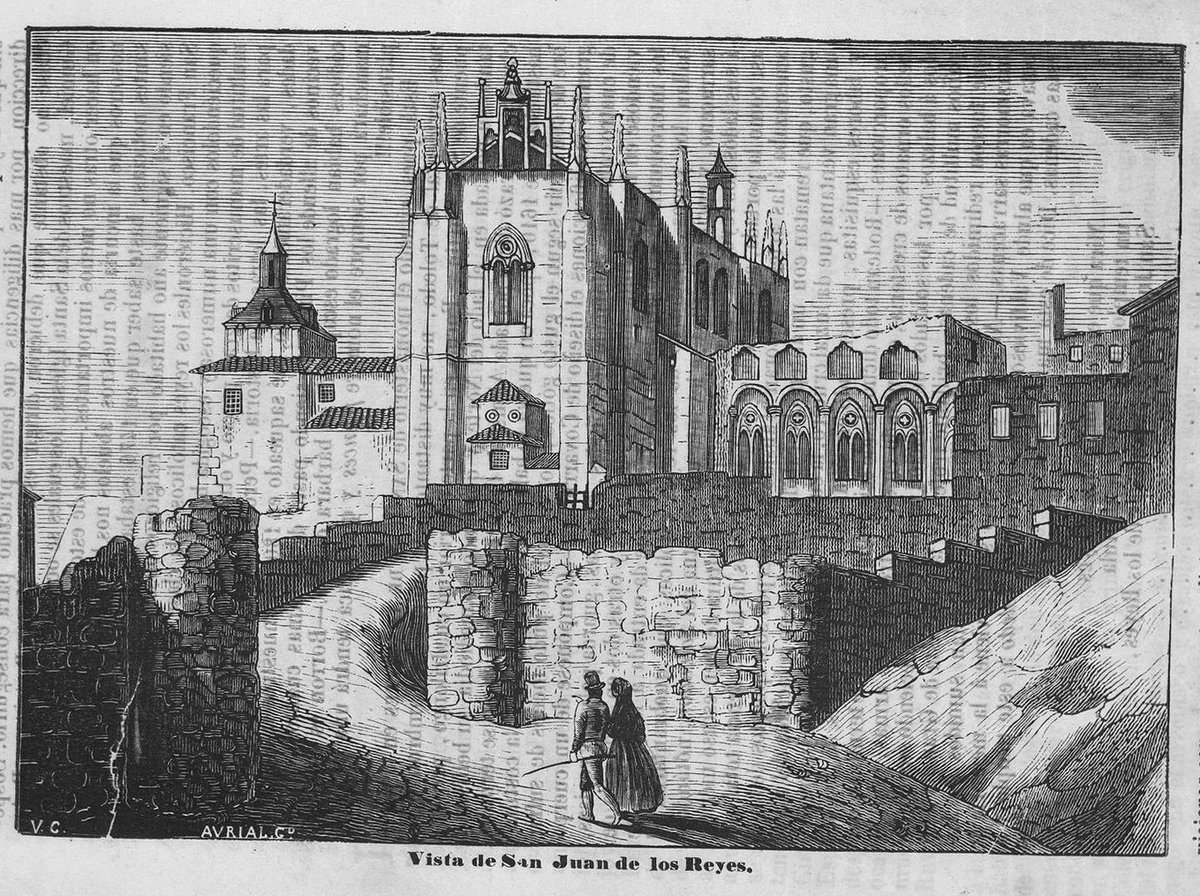
Monasterio de San Juan de los Reyes: Visiting Hours, Tickets, and Guide to Toledo Historical Sites
Date: 15/06/2025
Introduction
Located in the heart of Toledo’s historic Jewish Quarter, the Monasterio de San Juan de los Reyes stands as a remarkable symbol of Spain’s rich historical, artistic, and religious heritage. Commissioned by the Catholic Monarchs, Queen Isabella I of Castile and King Ferdinand II of Aragon, in the late 15th century, the monastery was intended as both a dynastic mausoleum and a memorial to their victory at the Battle of Toro. Today, it is celebrated for its stunning Isabelline Gothic architecture, Mudéjar influences, and the iconic chains adorning its façade—evoking the liberation of Christian captives and the unification of Spain.
This comprehensive guide provides essential information on visiting hours, ticketing, history, architectural highlights, accessibility, and recommendations for nearby attractions, ensuring you make the most of your visit to one of Toledo’s most iconic sites (Turismo Castilla-La Mancha; Toledo Travel Guide; Triphobo).
Historical and Cultural Significance
Foundation and Purpose
The Monasterio de San Juan de los Reyes was founded in 1476, closely tied to pivotal events such as the birth of Prince John and the Catholic Monarchs’ triumph at the Battle of Toro. Envisioned as a dynastic mausoleum and demonstration of their divine right to rule, it was originally intended as their burial site—though they ultimately chose the Capilla Real in Granada after its conquest in 1492 (Triphobo; Toledo Travel Guide).
Symbolism and Political Importance
The monastery’s dedication to Saint John the Evangelist and its location in Toledo, a city famous for religious coexistence, underscore the Catholic Monarchs’ vision for a unified Christian Spain. Chains on the façade commemorate the Christian captives liberated during the Reconquista, serving as a powerful political and spiritual symbol (Turismo Castilla-La Mancha).
Architectural Highlights
Isabelline Gothic and Mudéjar Fusion
Designed by Juan Guas, the monastery is a masterpiece of Isabelline Gothic, blending flamboyant Gothic elements with Mudéjar (Moorish-influenced) ornamentation. The single-nave church features ribbed vaults, star-shaped domes, and richly decorated chapels, while the cloisters are adorned with vegetal motifs, heraldic emblems, and grotesques.
Cloisters and Gardens
The two-story cloister offers a peaceful retreat, with the lower cloister surrounded by lush gardens and the upper cloister showcasing a remarkable Mudéjar-style coffered ceiling. Sculpted saints, gargoyles, and intricate stonework highlight the skill of late medieval artisans (Triphobo).
Façade and Symbolic Features
The exterior’s chains, believed to be those that once restrained Christian prisoners in Granada, are affixed as enduring symbols of faith and victory. Coats of arms, eagles of Saint John, and the yoke and arrows motif reinforce the monarchy’s dynastic imagery.
Historical Transformations and Restoration
San Juan de los Reyes has survived wars, confiscations, and fires. During the Peninsular War, Napoleonic troops set fire to the monastery, destroying the original altarpiece and library. The 19th-century confiscation of church property led to further loss, but careful restoration in the 19th and 20th centuries preserved the surviving structures. The Franciscan community returned in 1954, and today, ongoing conservation ensures the monastery remains a vibrant religious and cultural monument (Turismo Castilla-La Mancha).
Visiting Information
Opening Hours
- March 1 – October 15: 10:00 AM – 6:45 PM
- October 16 – February 28: 10:00 AM – 5:45 PM
- Closed: January 1 and December 25
Note: Last entry is 20 minutes before closing. Hours may vary on holidays—confirm on the official website.
Admission and Tickets
- General Admission: €4.00
- Reduced Admission: Available for students, seniors, and eligible groups with valid ID
- Free Entry: Children under a certain age and local residents (verify eligibility on the official site)
- Tourist Bracelet: Included in Toledo’s Tourist Bracelet, granting access to multiple monuments at a discount (makespain.com)
Tickets can be purchased on-site or as part of combination packages online.
Location and Accessibility
- Address: Calle de los Reyes Católicos, 17, 45002 Toledo, Spain
- Easily accessible on foot from Toledo’s city center or by public bus
- Wheelchair access is available to the lower cloister, old sacristy, and church; the upper cloister is not accessible due to the historic structure (sanjuandelosreyes.org)
Visitor Experience and Tips
- Recommended Duration: 45–60 minutes to explore the cloisters, church, and gardens
- Photography: Permitted throughout, except during religious ceremonies or special events
- Best Time to Visit: Early mornings or late afternoons on weekdays for fewer crowds and optimal lighting (thetourguy.com)
- Dress Code: Modest attire is recommended in respect of its active religious function
- Facilities: No public restrooms inside; nearest facilities are located behind the church
- Audio Guide: Complimentary Wi-Fi enables access to the “AudioguiaSanJuan” app in several languages, and free explanatory leaflets are provided at the entrance (sanjuandelosreyes.org)
Nearby Attractions
- San Martín Bridge: Offers panoramic views of the monastery and the Tagus River (thetourguy.com)
- Toledo Cathedral: A short walk to Spain’s premier Gothic cathedral (makespain.com)
- Jewish Quarter: Explore historic synagogues like Santa María la Blanca and Sinagoga del Tránsito
- Dining: Numerous nearby cafés and restaurants offer traditional Castilian dishes
Frequently Asked Questions (FAQ)
Q: Are guided tours available?
A: The monastery does not offer official guided tours, but private guides can be arranged locally. The audio guide app and leaflets provide comprehensive information.
Q: Is the monastery wheelchair accessible?
A: The lower cloister, sacristy, and church are accessible; the upper cloister is not.
Q: Can I take photos inside?
A: Yes, except during religious services or special events.
Q: Are tickets available online?
A: Tickets can be purchased on-site or through combination packages, including the Toledo Tourist Bracelet.
Q: What is the best time to visit to avoid crowds?
A: Early mornings and late afternoons on weekdays.
Practical Considerations
- Languages: Materials available in Spanish and English; audio guide supports additional languages
- Payments: Cash and card accepted
- Weather: Summers are hot—bring water and sun protection; cloisters offer some shade
- Safety: The area is generally safe, but standard precautions are recommended
Visuals and Resources
Related Toledo Historical Sites
- Santa María la Blanca Synagogue: History and Visiting Information
- Museum of Santa Cruz: Art and Archaeology Collections
Conclusion
The Monasterio de San Juan de los Reyes is not merely a historical monument, but a living testament to Spain’s journey through religious unification, dynastic ambition, and architectural innovation. Its harmonious blend of Gothic and Mudéjar styles, emblematic chains, and tranquil cloisters provide a profound experience for visitors interested in history, art, or spirituality. With its central location in Toledo’s Jewish Quarter, it serves as a perfect starting point to explore the city’s rich legacy of cultural coexistence.
Plan your visit with confidence using this guide, download the “AudioguiaSanJuan” app for an enriching self-guided tour, and explore related Toledo landmarks to fully appreciate the tapestry of Spain’s heritage.
Contact and Official Information
- Address: Calle de los Reyes Católicos, 17, 45002 Toledo, Spain
- Phone: +34 925 22 38 02
- Official Website: sanjuandelosreyes.org
For the latest updates on hours, tickets, and accessibility, always check the official website before your visit.
